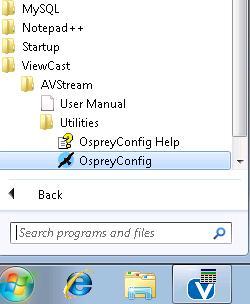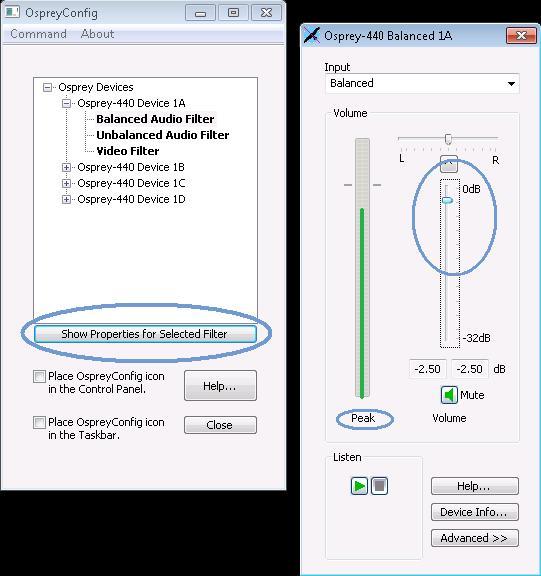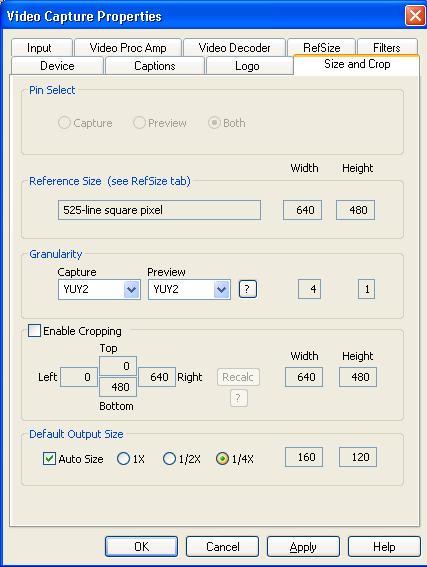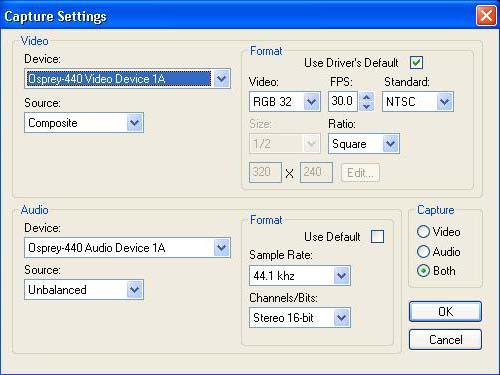Appendix A Using Osprey to Examine A/V Streams¶
On the Osprey 460e cards, Audio/Video can be examined at the input independently of the Observer software. This is useful for general A/V debugging and for Audio configuration.

Figure: Accessing ViewCast¶
At the Backend - go to Programs and open the ViewCast SwiftCap program.

Figure: Viewcast SwifCap¶
Select the video channels in Capture Settings.
If you are working over Remote Desktop and network bandwidth is limited, decrease the size of the SwiftCap display in Video Capture Properties using Default Output Size selection.
Click the Start Preview icon in Osprey SwiftCap screen above to examine the video input you just configured.
Adjusting Audio with Osprey Config¶
In addition to the automatic audio adjustment, search for “Audio Adjust” section above, there is a manual procedure to adjust Osprey cards. From desktop select Start → All Programs → ViewCast → AVStream → Utilities → Osprey Config.

Figure: OspreyConfig¶
The Osprey Config Panel appears. Expand the “Osprey 460e Device 1A”, and select “Balanced or Unbalanced Audio filter”.

Figure: Osprey Filter¶
Press the <Show Properties for Selected Filter> button. The “Osprey 460e Balanced 1A” window appears.
Note the “Peak” vertical (green) bar which indicates the incoming signal level.
The Volume bar on the right has a dB grading scale to measure the incoming signal. Move the “Audio gain” handle circled by the vertical ellipse accordingly to adjust the incoming audio level.

